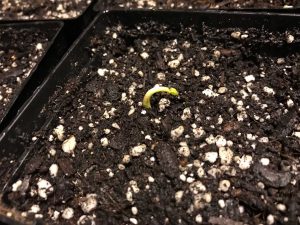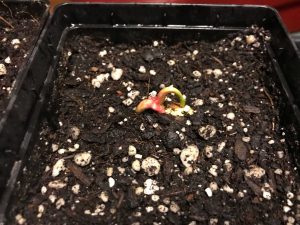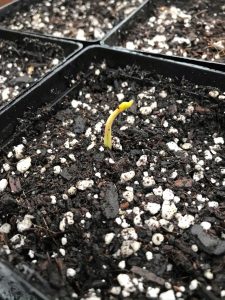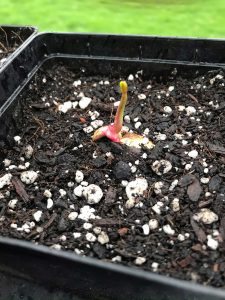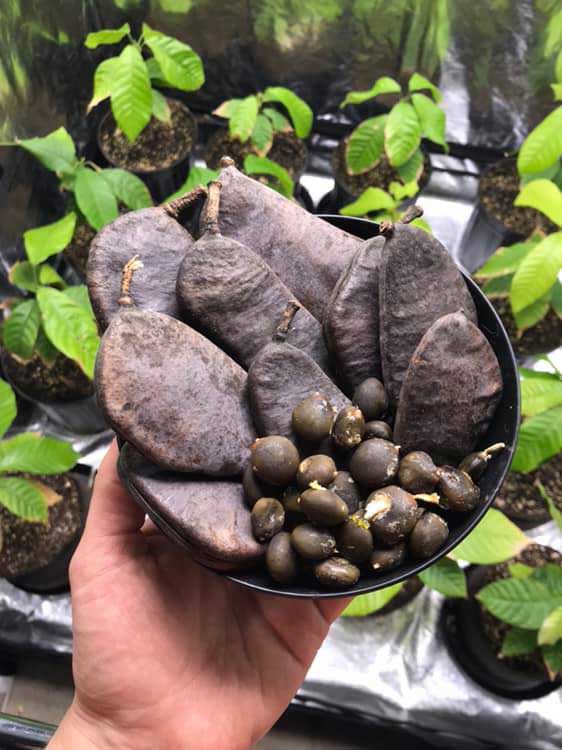
I must not be the only coffee fanatic in the northern USDA Hardiness Zones who wishes he could grow coffee trees outdoors all year round. While I have grown my own coffee trees (Coffea arabica) outdoors and overwintered indoors for many years, I have yet to harvest my own berries, much less brew a pot of homegrown coffee. That is why when I learned about the Kentucky coffeetree (Gymnocladus dioicus), I was immediately intrigued. Could this native species be the alternative homegrown coffee I’ve been searching for? Short answer is no. It doesn’t even have caffeine, but that won’t stop me from trying to grow it as a botanical curiosity. These seeds require a bit of treatment in order to successfully germinate, so here are the steps I took to start Kentucky coffeetree from seed:
Step 1: Scarify the Seed Coats
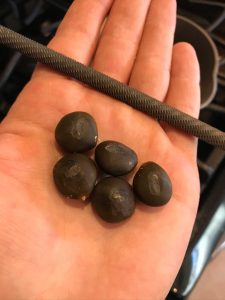
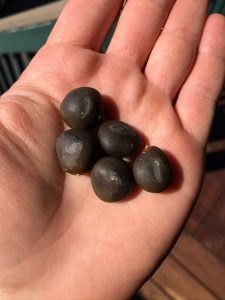
The first step to germinating Kentucky coffeetree seeds is scarifying the seedcoat with a file. You want to break through the outer waxy layer and just into the darker brown seed coat.
Step 2: Soak the Seeds for 24 Hours
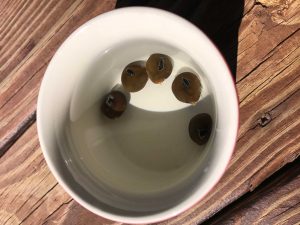
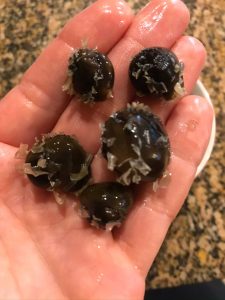
After you’ve scratched through the seed coat with your file, simply soak your seeds for 24 hours in a cup of water. I actually boiled water and poured that boiling water into a cup with the seeds, allowing the water to cool to room temperature and remain there for 24 hours. The goal here is for that outer waxy layer of the seed coat to start to peel off. This will further allow water to penetrate the seed and make it easier for the growth to emerge.
Goldleaf Pro Tip: A great trick to increase odds of germination for any hard shelled seed is to soak it in some humic acid when you do your seed soak. We’ve also had success using a small to-go sauce container with a lid, filling the container with a seed soaking solution of 1 part concentrated hydrogen peroxide to 3 parts water with a teaspoon of humid acid. The container with lid causes pressure to build as the peroxide (H2O2) converts into H2O and O2. As it creates gas, the increased pressure helps the humic acid penetrate and break down the seed hull.
Step 3: Clean the Seeds and Plant in Soil
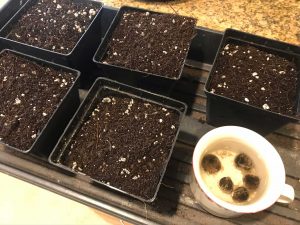
After your scarified seeds have soaked for about 24 hours, it’s time to simply plant in soil like a typical garden seed. I think it’s wise to gently remove any part of the seed coat that has peeled away so there’s less organic matter in your soil likely to rot and impede germination. You can also water in with beneficial microorganisms to inoculate your soil against disease and pathogens (be sure to dechlorinate too), or you can continue using a hydrogen peroxide solution to keep it sterile. After you’ve planted and watered, you can expect to see signs of germination within just a few days.
Step 4: Transplant Your Kentucky Coffeetree Seedling
Once your seedling is 4-6″ tall or has several sets of true leaves, you can transfer it into its next home, whether that be a small pot or a nursery bed. My personal preference is to grow my trees in fabric Smart Pots for several years before planting in the ground. I like to plant in a coconut based organic soil mix with a little bit of slow release organic fertilizer. The Smart Pots are air pruning containers that prevent root circling and encourage a more fibrous, vigorous root system with fine feeder roots. You can keep your Kentucky coffeetree outside in full sun through the summer, and try to give it a little protection or windbreak through the cold months until its roots are protected in the earth.
As you can see, Kentucky coffeetree seeds germinate rather easily with just a little treatment. The seeds shown were a year old and still germinated readily. As for that pot of Indiana grown coffee–we will just have to wait a few years and see for ourselves!
